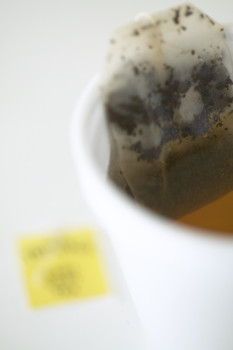Apr 19 2005
 Add another line to the list of benefits from drinking tea: New research in animals suggests that tea may be a simple, inexpensive means of preventing diabetes and its ensuing complications, including cataracts. The report, scheduled to appear in the May 4 print issue of the American Chemical Society's Journal of Agricultural and Food Chemistry, was published March 31 on the journal's Web site.
Add another line to the list of benefits from drinking tea: New research in animals suggests that tea may be a simple, inexpensive means of preventing diabetes and its ensuing complications, including cataracts. The report, scheduled to appear in the May 4 print issue of the American Chemical Society's Journal of Agricultural and Food Chemistry, was published March 31 on the journal's Web site.
Researchers fed green and black tea to diabetic rats for three months and then monitored the chemical composition of the rats' blood and eye lenses. At levels that would be equivalent to less than five cups of tea per day for a human, both teas significantly inhibited cataract formation relative to a control group which did not get tea, they say. The researchers found that both teas decreased glucose levels, which in turn affects other biochemical pathways that accelerate diabetic complications such as cataracts.
"Most people, scientists included, believe that green tea has more health benefits than black tea," says Joe Vinson, Ph.D., a chemist at the University of Scranton (Penn.) and lead author of the paper. In combination with Vinson's earlier research showing that green tea and black tea equally inhibit atherosclerosis — a major risk factor for heart disease — the findings suggest that both drinks could play a part in curbing two of the most widespread maladies in the United States today.
The American Chemical Society is a nonprofit organization, chartered by the U.S. Congress, with a multidisciplinary membership of more than 158,000 chemists and chemical engineers. It publishes numerous scientific journals and databases, convenes major research conferences and provides educational, science policy and career programs in chemistry. Its main offices are in Washington, D.C., and Columbus, Ohio.